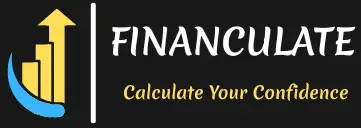The Federal Housing Finance Agency (FHFA) has decided to let Fannie Mae and Freddie Mac use VantageScore as an alternative to the traditional FICO score. It’s a major shift that could change how potential homeowners approach mortgages. Since Fannie Mae and Freddie Mac are two of the largest mortgage entities in the U.S., their move to accept VantageScore could influence aspects like credit accessibility and mortgage rates.
Understanding VantageScore and FICO
To get a handle on this change, you need to know how VantageScore and FICO differ. Lenders have typically used FICO scores to measure a borrower’s creditworthiness. These scores rely on payment history, amounts owed, length of credit history, credit mix, and new credit inquiries. VantageScore, however, uses a different approach, developed by Equifax, Experian, and TransUnion. It assesses certain credit behaviors differently. For instance, it minimizes the impact of medical collections and benefits consumers with shorter credit histories. This can result in a better score for those who might have a lower FICO due to unique situations.
The Impact on Mortgage Approvals
Including VantageScore could increase the number of people who qualify for mortgages. Individuals with solid credit but limited histories, or those who’ve faced financial hurdles, may see an improved credit evaluation. Young adults, immigrants, and people rebuilding credit could benefit from this more fair assessment. VantageScore can provide an alternative score that reflects borrowers’ current financial standings more accurately. This can be key in overcoming barriers to homeownership, mainly when it comes to accessing affordable credit.
Potential Impacts on Mortgage Rates
Adopting VantageScore could affect mortgage rates. Generally, higher credit scores lead to better rates. Lenders might adjust rates based on different scoring models and perceived risks. However, VantageScore’s fairer evaluation might actually help stabilize or lower rates for some groups. Over time, this could offer a well-balanced risk and reward, helping borrowers who are overlooked by traditional FICO metrics.
Consumer Preparation and Awareness
VantageScore’s acceptance highlights the need for consumers to understand the factors affecting their credit scores. As these scores become crucial in mortgage applications, checking both VantageScore and FICO scores is essential. Maintaining a solid credit profile means timely bill payments, low credit card balances, and avoiding unnecessary debts. It’s also important to dispute any credit report errors that could hurt scores. Staying informed and ready to adapt financial habits ensures you’re well-prepared for these new opportunities.
Industry Transition and Long-term Effects
The transition to including VantageScore won’t be immediate. Lenders will need time to adjust their processes. This period offers consumers a chance to get familiar with both scoring systems. In the long run, dual credit scoring models might lead to a healthier, more inclusive financial system. VantageScore’s integration may drive further improvements in credit evaluation and lending.
Conclusion
Allowing VantageScore for mortgage applications marks a crucial change in U.S. personal finance. This shift promises to improve access for many potential homeowners, presenting a fairer view of financial health. While there could be shifts in mortgage rate assessments, the benefits for diverse groups seeking homeownership are promising. Individuals now have the chance—and responsibility—to refine their credit profiles in this new lending environment. As the market evolves, staying knowledgeable and prepared will be key to seizing these emerging opportunities.
For more information, you can visit the original article on USA Today.

